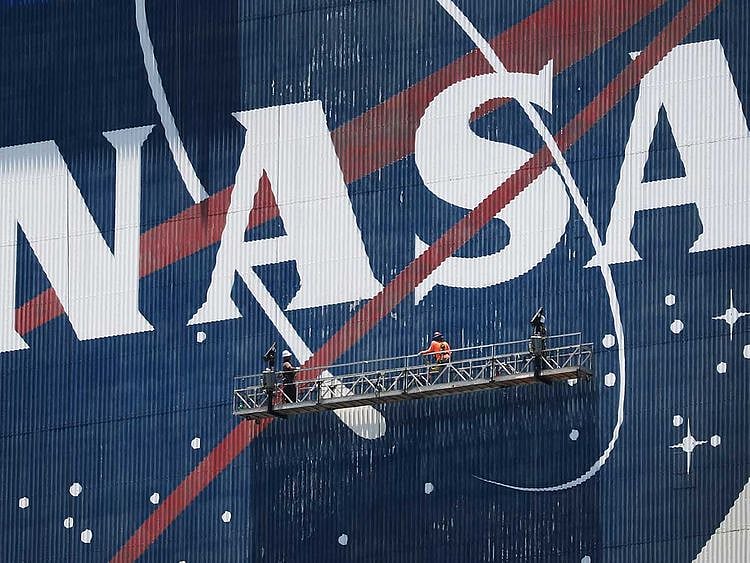NASA team studying UFO mysteries says experts need better data
‘Absolutely no convincing evidence of extraterrestrial life associated with UAPs’

Washington: A panel commissioned by NASA to study what the government calls unidentified anomalous phenomena (UAP), more widely known as UFOs, said Wednesday that it needed more and better-quality information to understand and describe hundreds of mysterious objects that have been reported in the skies over the years.
But panel members were also emphatic that they had seen no evidence to attribute the unidentified objects to extraterrestrial intelligence.
“There is absolutely no convincing evidence of extraterrestrial life associated with UAPs,” Daniel Evans, NASA’s assistant deputy associate administrator for research, told reporters following a public event in Washington, where the space agency’s 16-member expert panel presented some preliminary findings and fielded questions from the public.
NASA has said before there’s no evidence that UAPs, including some that Navy pilots have reported zipping through the skies at apparently astonishing speeds, are not of this earth. But the statement was significant coming from the first group of independent experts that the esteemed space agency has ever convened to study the phenomena.
The inquiry comes amid a new openness across the government to examine the objects as potential threats to commercial aviation or US national security.
“NASA believes that the tools of science apply to the study of UAPs, because that allows us to separate fact from fiction,” Evans said.
A Pentagon office heads a separate government-wide effort to analyse UAP sightings. It has examined more than 800 sightings based on information collected over nearly three decades. Of those, only between 2 and 5 percent could be described as “anomalous,” or truly inexplicable, said Sean Kirkpatrick, who heads the Defense Department All-domain Anomaly Resolution Office.
The NASA-convened panel, whose members are drawn from a wide range of professional disciplines, has conducted its inquiry separate from the Pentagon effort. Members had no access to classified information, such as sensor data captured by the military or intelligence agencies.
The panel’s task was to set up a “road map” for NASA, which plans to contribute in coming years to the study of UAPs using an unclassified, science-based approach, said David Spergel, an astrophysicist who chairs the panel. The group will release a final report in late July.
So far, Spergel said, the experts lack sufficient data to help describe UAP reports, many of which have flooded into the Defense Department after the military adopted a policy of encouraging personnel to speak up when they see strange objects.
“The current data collection efforts about UAPs are unsystematic and fragmented across various agencies, often using instruments uncalibrated for scientific data collection,” Spergel said during the panel’s opening remarks.
To better understand and describe UAPs, NASA needs “better, targeted data collection, thorough data curation and robust analysis,” Spergel said. “Even then there’s no guarantee that all sightings will be explained.”
Experts were able to dispel some mystery around previously unexplained sightings. Kirkpatrick showed a video taken by US naval aircraft of three dots moving across the sky. A plane tried and failed to intercept the objects, spotted over the western United States. They turned out to be commercial aircraft that were much farther away than initially understood.
Optical illusions help explain another well-known video of an object that appears to fly over the ocean at unusually high speed. Using information captured by the Navy plane that observed the UAP from above, investigators calculated it was actually moving only at about 64kmph, or roughly the speed of the wind at the altitude where it was observed.
While the panel was short on revelations, its public hearing marked an important step toward trying to reduce the snickers and stigma that have long accompanied reports about strange lights in the sky, particularly those made by pilots, panelists said.
“One of our goals is to remove the stigma, because there is a need for high-quality data to address important questions about UAPs,” Spergel said.
Others noted that during their time working on the panel, they’ve been subjected to online taunts.
“Harassment only leads to further stigmatization of the UAP field, significantly hindering the scientific process and discouraging others to study this important subject matter,” said Nicola Fox, associate administrator for NASA’s Science Mission Directorate.
Sign up for the Daily Briefing
Get the latest news and updates straight to your inbox
Network Links
GN StoreDownload our app
© Al Nisr Publishing LLC 2025. All rights reserved.